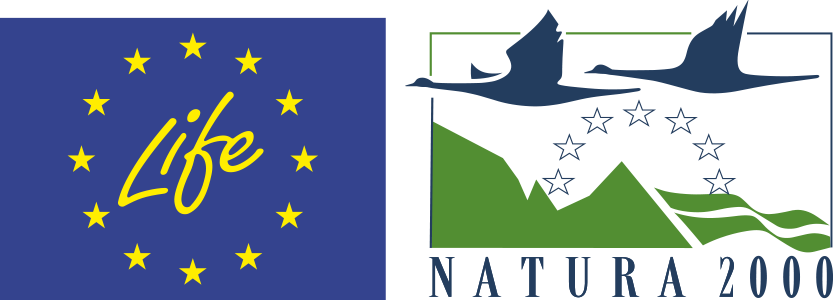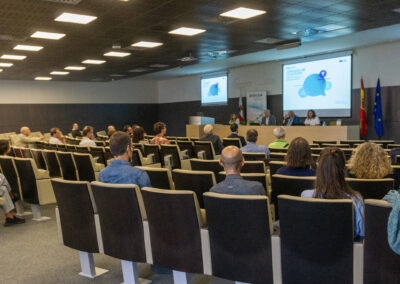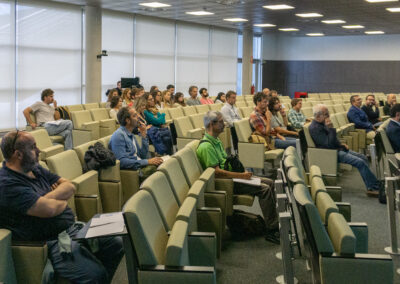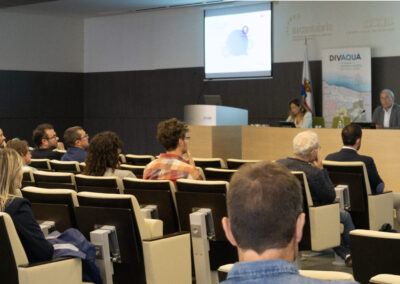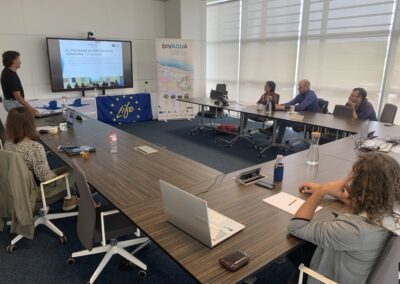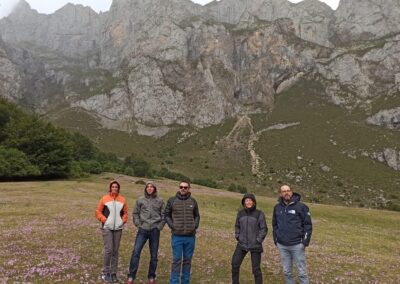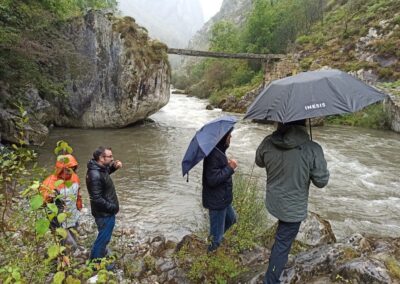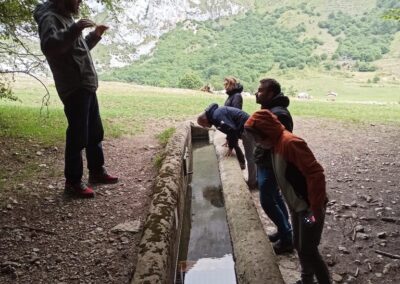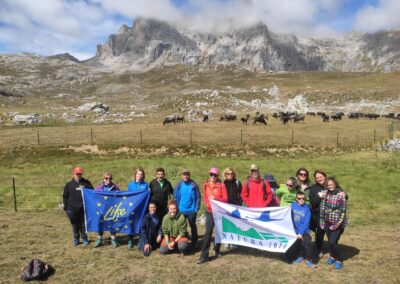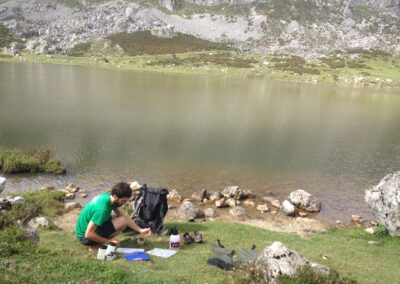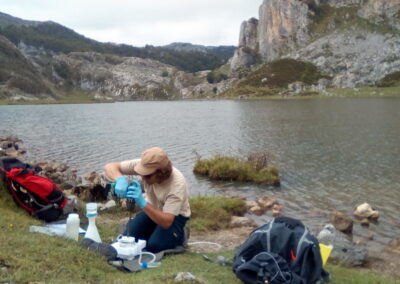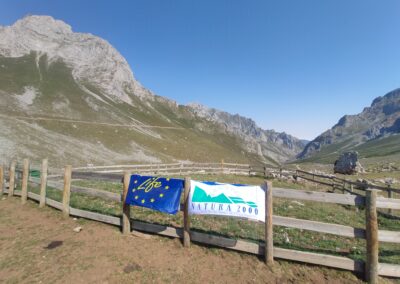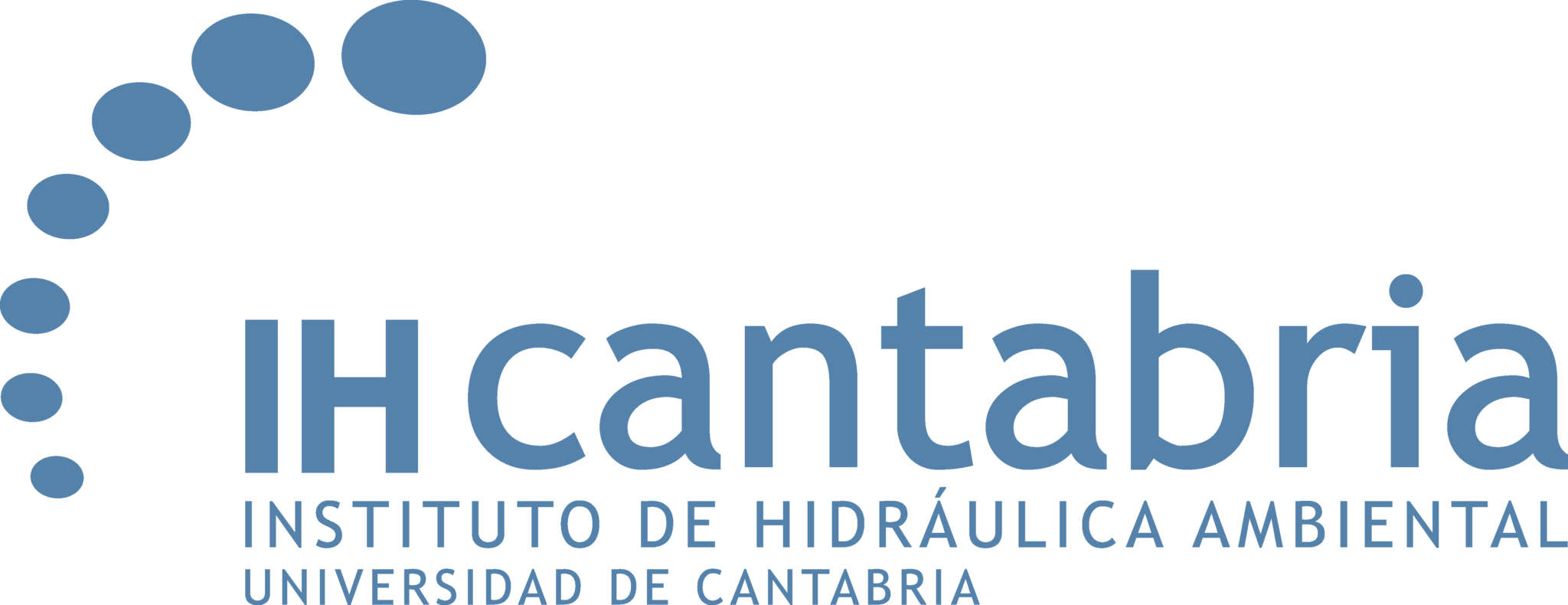IHCantabria celebrates the closing day of LIFE DIVAQUA project
DIVAQUA promotes the biodiversity of aquatic ecosystems in the Picos de Europa environment, reconciling their conservation with human activities.
The Institute of Environmental Hydraulics of the University of Cantabria(IHCantabria) has celebrated today the closing day of the European project LIFE DIVAQUA: improving the diversity of aquatic ecosystems in Picos de Europa.
The main objective of DIVAQUA has been to improve the conservation status of the aquatic habitats and species of community interest, those referred to in the European Habitats Directive, in the Picos de Europa and its surroundings.
DIVAQUA has counted with the participation of the Governments of the Principality of Asturias, Cantabria and Castilla y León, the University of Cantabria, the Fundación Instituto de Hidráulica Ambiental Cantabria (FIHAC), Red Cambera, the Consejo Superior de Investigaciones Científicas (CSIC), the Centro Tecnológico Agrario y Agroalimentario Itagra.CT, Repsol, and Altano Energy.
This project has been coordinated by the University of Cantabria (UC), through IHCantabria.
Its development has meant a step forward in improving the conservation status of aquatic ecosystems and their associated biodiversity in the basins of the Sella and Deva-Cares rivers, in northern Spain, in an area of 245,000 hectares that includes part of the Autonomous Regions of Asturias, Cantabria and Castilla y León, with special attention to the Picos de Europa National Park.
This area includes seven Special Areas of Conservation (SAC) of the Natura 2000 Network.
In order to improve aquatic biodiversity in both basins, DIVAQUA focused its development on the implementation of various conservation actions aimed at reducing the effect of human activities on these ecosystems (tourism, hydroelectric power plants or livestock, for example) and on the development of new approaches and tools for characterization, evaluation and decision making to improve the management of this area, accompanied by a complete communication and dissemination plan for the project and its most relevant achievements.
More specifically, these conservation actions focused on: improving the continuity of river ecosystems, acting on various hydraulic infrastructures, improving the water quality of various lotic and lentic ecosystems and promoting direct improvements to various habitats and species of community interest.
“The development of this project allowed us to identify where and why there are conservation problems, some relevant environmental elements and the challenges of the future; in addition to having promoted the creation of collaborative networks to improve our knowledge on these issues,” said José Barquín, UC professor, head of the Continental Ecosystems Group of IHCantabria and coordinator of the DIVAQUA project.
Evaluation of the results of the LIFE DIVAQUA project
On September 11 and 12, 2024, the different partners of the LIFE DIVAQUA project were visited by Edouard Gatineau and Ainhoa Darquistade, representatives of the European Executive Agency for Climate, Infrastructure and Environment (CINEA), during the last coordination meeting of the project.
During their follow-up visit, they were able to evaluate in the field the results obtained after the implementation of the different conservation actions carried out in DIVAQUA.
Among these, the elimination of old disused dams that fragmented the fluvial continuum, affecting the distribution of fish populations and other processes typical of these ecosystems, the protection of wetlands of community interest, the adaptation of watering places for a livestock use compatible with the conservation of amphibians, the restoration of riparian forests prioritized by the Habitats Directive, or the expansion of species of community interest, such as the Woodwardia radicans fern, stand out.
Some of the most significant achievements of this project are the reduction of the effects of various anthropogenic alterations on the aquatic environment and its biological communities, the promotion of the sustainability of socioeconomic activities and the development of innovative tools for the monitoring and management of these ecosystems, their habitats and species.
This project has also facilitated collaboration among various actors, which has allowed the consolidation of a cooperation network that ensures the continuity of the efforts initiated.
Its success also derives from the compensatory measures promoted, as well as from its communication and dissemination strategy.
Therefore, “the results of the LIFE DIVAQUA project are not only generating an immediate impact on the aquatic ecosystems of Picos de Europa, but it has also established a conservation legacy that will last in time, because the methodologies and actions developed are applicable to other European aquatic ecosystems, which reinforces the role of the project in the promotion of sustainability and biodiversity at continental level”, says José Barquín.
LIFE DIVAQUA is 60% financed by the European Commission’s LIFE Program, an instrument created in 1992 to support projects that contribute to sustainable development and the achievement of European climate and environmental objectives.
The results of the LIFE DIVAQUA project confirm the potential of this program to boost the conservation of natural resources throughout Europe.

Several partners of the LIFE DIVAQUA project, during the closing ceremony of this project, which took place on September 17, in the Auditorium of IHCantabria.
This project has been co-financed
by the LIFE Program of the European Union.
